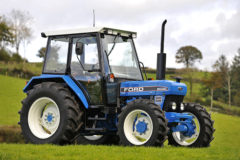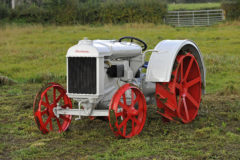Allis-Chalmers Model M crawler
Posted by Chris Graham on 3rd December 2020
Tony Hoyland introduces the Allis-Chalmers Model M; the baby of the 1930s Allis-Chalmers’ crawler range.

Allis-Chalmers Model M crawler: Ken manoeuvres the his WM out into the autumn sunshine.
Allis-Chalmers itself proclaimed that, in designing the Model M, its ‘engineers produced what is said to be the best-balanced tractor of its power and rating, regardless of price, on the market today. This is an asset that no tractor buyer can afford to overlook… one that adds nothing to the price, but much to the tractor’s value on his farm.’
Popular seller
The Model M must have had something going for it, given that about 14,500 units were manufactured during a production run that ran for the 10 years between 1932 and 1942. Allis-Chalmers produced several versions of the M to cover most applications of the time. The standard Model M was designed for general fieldwork, the Orchard M (with full-length fenders and available in ‘top seat’ or ‘rear seat’ configurations), and the tractor featured here, the WM wide tread version.
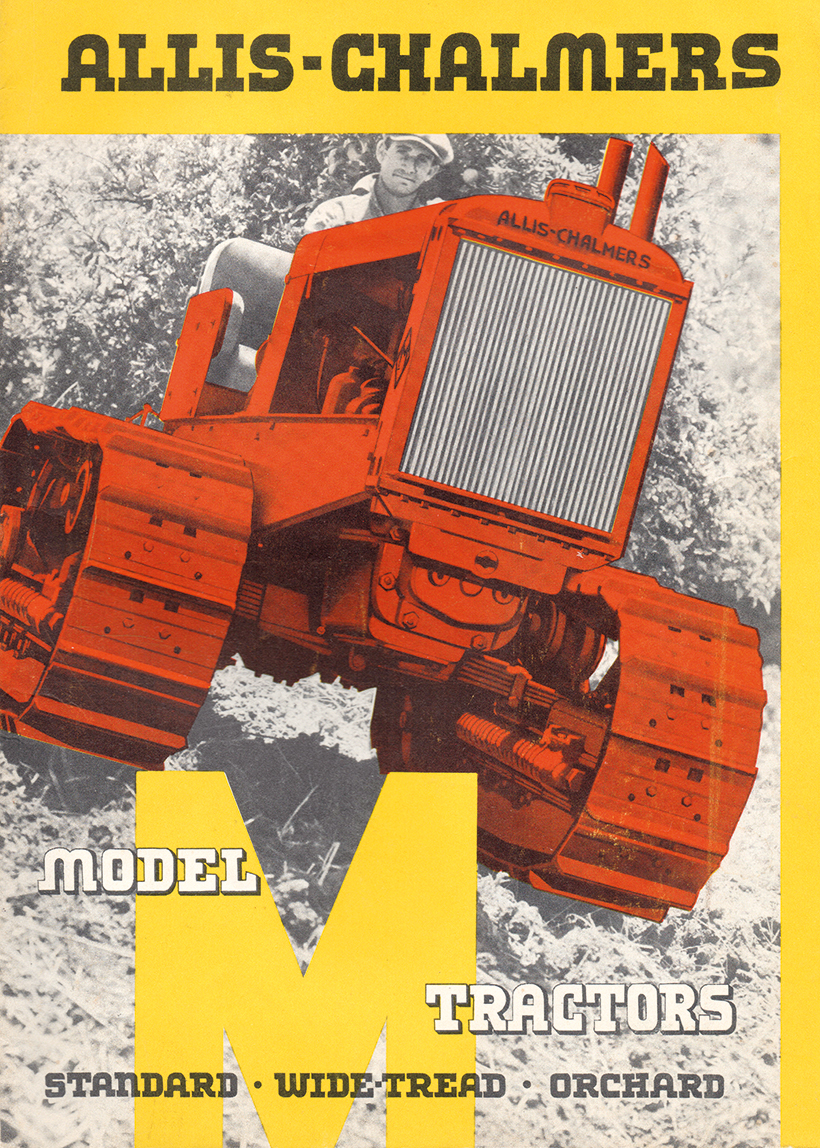
Period brochure which goes in to great detail about the Model M’s construction.
The Model M had a 40in tread centre and 12in track shoes; narrow enough for 8ft and 12ft rows, and suitable for many row crops. The Model WM, however, was designed with hilly terrain in mind, with its wide tread providing greater stability and traction on steep terrain. With 50in tread centres, 12, 14, 16, 18, 20 and 22in-wide track shoes were also available.
Owner’s story
The Allis-Chalmers WM shown here is owned by Ken Barber from Cowbridge, near Boston, Lincolnshire, and is a tractor he has shown several times at the local Carrington Rally. It’s a Lend-Lease tractor built around 1942, that came into his possession some 18-20 years ago, from Dennis Paling.

A quick bleed of the fuel filter and a couple of turns on the handle, and away she went!
The tractor was in running order when Ken got it, and he often used to take it to ploughing matches. But it was a stroke of luck that led him to discover that the rocker was running dry. He only discovered this when he took the cover off to check the tappets. With the petrol tank and head removed, he took a good look around the engine to find the fault. The pistons and liners were as good as new. However, the cylinder head stud (situated to the right-hand side of the driver at the rear of the engine), which was drilled and supplied an oil feed to the rocker, was blocked and so a new one had to be machined. A lucky escape, indeed.
Impressive workhorse
He likes his model WM to be seen as a working tractor, and leaves the features where he can that show its well-worked past. These include the wear on the drawbar, where the pin had worn the eyes oval. He had considered making them good, but left them as they’re an indication of all the hard work the tractor has done over the years.

The company promoted the Allis-Chalmers brand as one of ‘matchless engineering’.
Ken, now 75, is no stranger to the land, and spent all his working life in agriculture. From an early spell working for Coupland Bros on tractors such as a Fowler and Oliver 80, he moved to the Witham Forth Drainage Board. There he became skilled at operating a Ruston RB-10 dragline and Whitlock 307 digger. He left Witham Forth after six years to pursue similar drainage work with other companies, before finally returning to the firm to spend 22 years as the foreman there. One of his favourite working tractors was the IH 3400 he operated while at H Adkins for a spell. While he was there, he was the only one to work with it, and it brought back so many happy memories for him.
Tough engine
Allis-Chalmers was proud of its ‘mighty A-C engine’ and its precision manufacture, declaring in promotional material for the Model M: ‘Here is an engine built to withstand harsh, relentless service in extreme heat or bitter cold… in tough going… to pull heavy loads… to work long hours. It is the kind of engine you have always wanted in your tractor.’
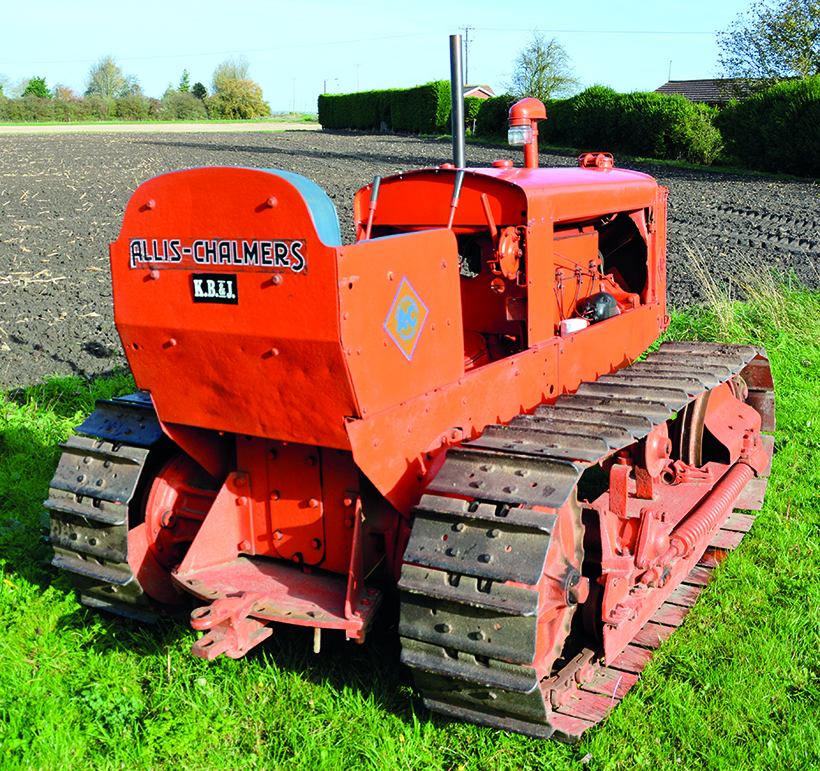
Plenty of dents in the tinwork to remind us of a working past. Is ‘KB&J’ a reference to a company? No, it stands for Ken Barber and Julia (his wife), and was presented to him by his good friend, the late Maurice Coupland.
This point is not lost on Ken, who adds: “Tractors like this were used to being worked hard. Whether they ran on paraffin or diesel, they wanted to be worked to keep them right. The old hands used to say: ‘They would be neither sick nor sorry if working hard.’ The variable speed governor is really sensitive, and it was also said that, when you turned around on the ends into a headwind, it would kick in!”
The engine was also designed to run on gasoline, kerosene or distillate; ‘whichever fuel is cheapest, most easily obtainable or best suited to the work or territory in which the tractor was being used.’ It could even be adapted to run on butane.
Long life
Ken says the gear lever is still as stiff as it was when the tractor was new. Allis-Chalmers was keen to promote the robustness of its products to potential customers, with statements such as: ‘No finer gears are made than those found in the transmission and final drive of the Model M’ and, ‘The gears in the Model M, given proper lubrication, will outlast the tractor.’ Something that Ken can easily believe, after all his experience with the machine.

Another sign that this tractor has been worked hard; the hole for the drawbar pin has been worn oval.
Going around the crawler, Ken explained that it’s fitted with a Case magneto, which wouldn’t have been the original make on the tractor when produced. He added: “I understand that the side plates came with the tractor but, at some point, they were perhaps taken off for some engine maintenance and were most likely run over, which was a common occurrence. Another problem I had was the manifold began blowing. Original manifolds are hard to find now, and I thought I was in trouble. But Eamonn Pell, an engineer I know, rectified it by fitting some metal inserts.”
For display
On my visit, Ken had to bring out his Model WM from the barn where his machinery is stored (or should I say ‘hibernating’ this year, because of the Covid situation?). Nevertheless, the tractor turned over quite easily to trundle out for our photoshoot. At the back of the barn was a Ransomes Mid-Trac plough, well suited to the tractor, and a refurbished bowser. Ken likes to use them hooked up with the Model WM at events such as the Carrington Rally, to show the type of rig that would have been seen in the fields in days gone by.

The WM wide track version of the Model M can accept track shoe widths of up to 22in.
The tank, pump and chassis of the bowser are original. However, the wooden storage box is built around a galvanised water tank laid on its side, giving extra strength and security to the construction. It certainly adds an extra level of interest when he exhibits – I look forward to seeing it again soon.
Gentle persuasion
After reading Allis-Chalmers’ persuasive arguments for the Model M, why would you not go out and buy one?
“Did you ever try pushing a heavily-loaded wheelbarrow through freshly-plowed ground? Hard work, wasn’t it? But, if you laid a plank on top of the loose soil and allowed the wheel to roll on it, the resistance was greatly diminished, and you moved the load easily!

A functional cockpit providing simple controls and a roomy, comfortable seat.
“Just as simple is the principle upon which the track-type tractor works. Instead of wheels, which must be pushed and driven over the ground, the track-type tractor lays its own rails… fastened to broad shoes that may be compared to railroad ties… and rolls smoothly over them.
“The farmer who owns a track-type tractor is master of every situation. In the spring, he can get into his fields from 10 days to two weeks sooner. He can work on steeper hills. His work goes on with fewer interruptions because of weather or soil conditions. Only in a track-type tractor can you have all of these advantages.”
MODEL M SPECIFICATIONS
| Engine | Allis-Chalmers 4-cylinder; |
| Bore x stroke (after serial no. 2942) | 4½in x 5in |
| Rated speed | 1,200rpm |
| Fuel | Gasoline, kerosene, distillate. |
| Transmission | Four forward; one reverse. |
| Speeds (mph) | First, 2.23; second, 3.20; third, 4.15; fourth, 1.83; reverse, 2.55. (Special fourth, in place of regular, 5.82mph, available at extra cost). |
| Master clutch | Dry plate disc type; 12-inch diameter; foot control; easy, positive engagement. |
GENERAL DIMENSIONS
| Standard tread (centre to centre of tracks) | 40in; wide tread, 50in. |
| Overall length | 101 3/8in |
| Overall width | 57¼in. |
| Height to top of radiator | 57in |
| Shipping weights | Standard M 6500lb; Model WM (with 12in grouser track shoes) 6790lb |
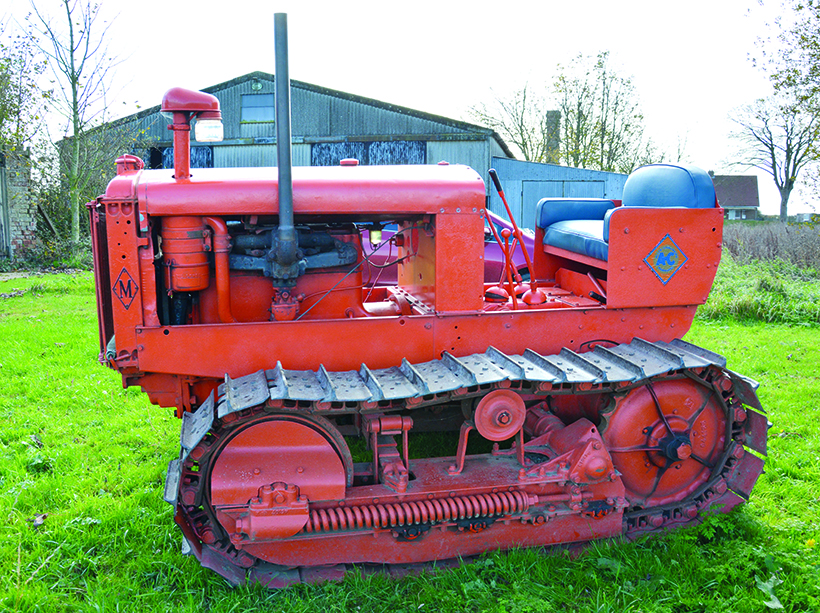
The wide tread on the WM gave it better stability and reduced ground pressures.
Special equipment
Many extras were available for the Model M range, including complete electric starting and lighting equipment; canopy top; canvas curtains; complete winter cab; side plates for hood; radiator and crankcase guards; bumper; front hook; exhaust muffler; power take-off (rear, double rear, or side); special dirt, snow and ice grousers, street plates, and a wide selection of types and sizes of track shoes.
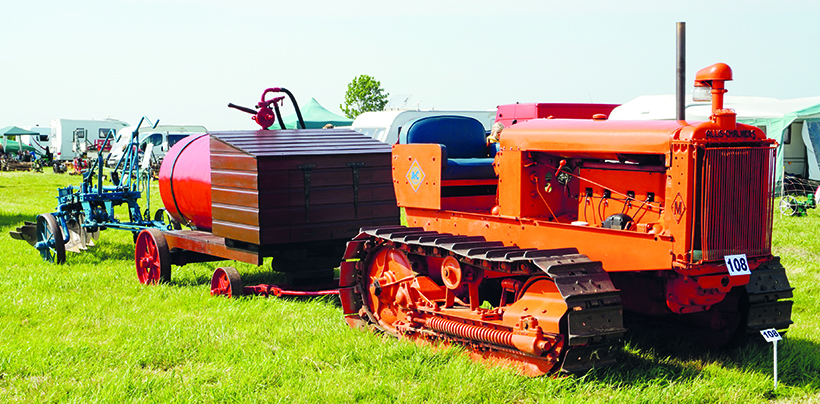
Ken’s Model M with bowser and Ransomes plough attached, at a past Carrington Rally.
For a money-saving subscription to Tractor & Farming Heritage magazine, simply click here



